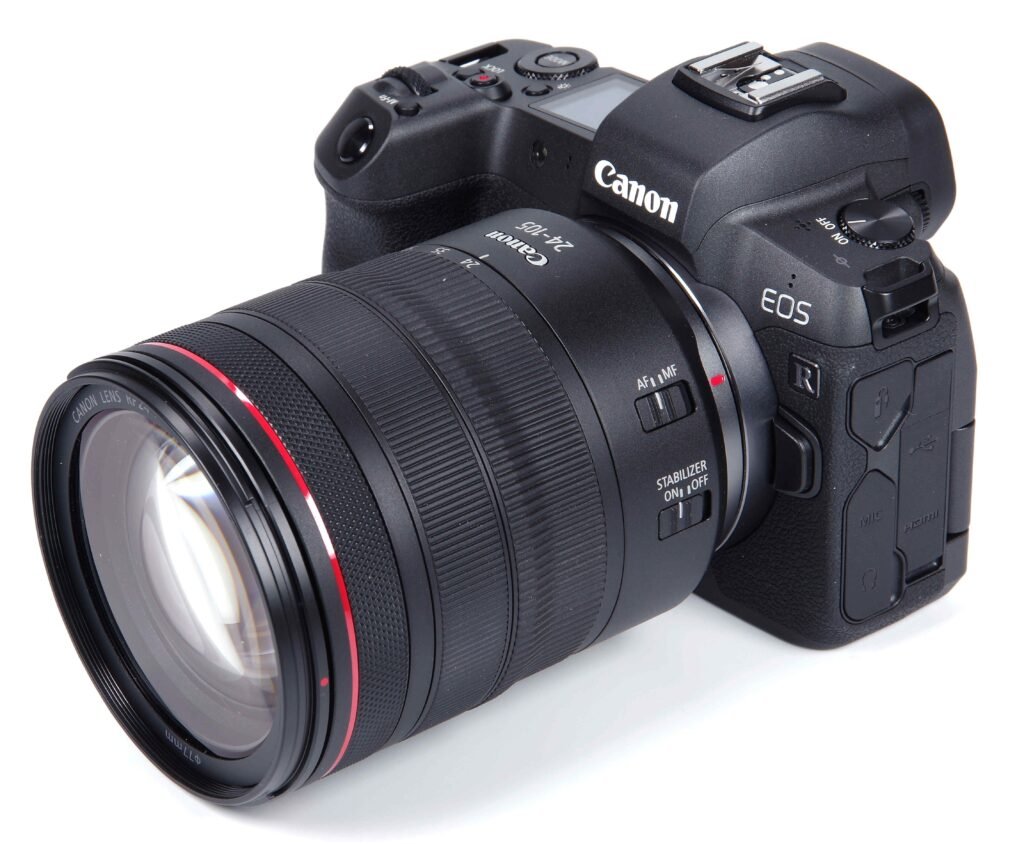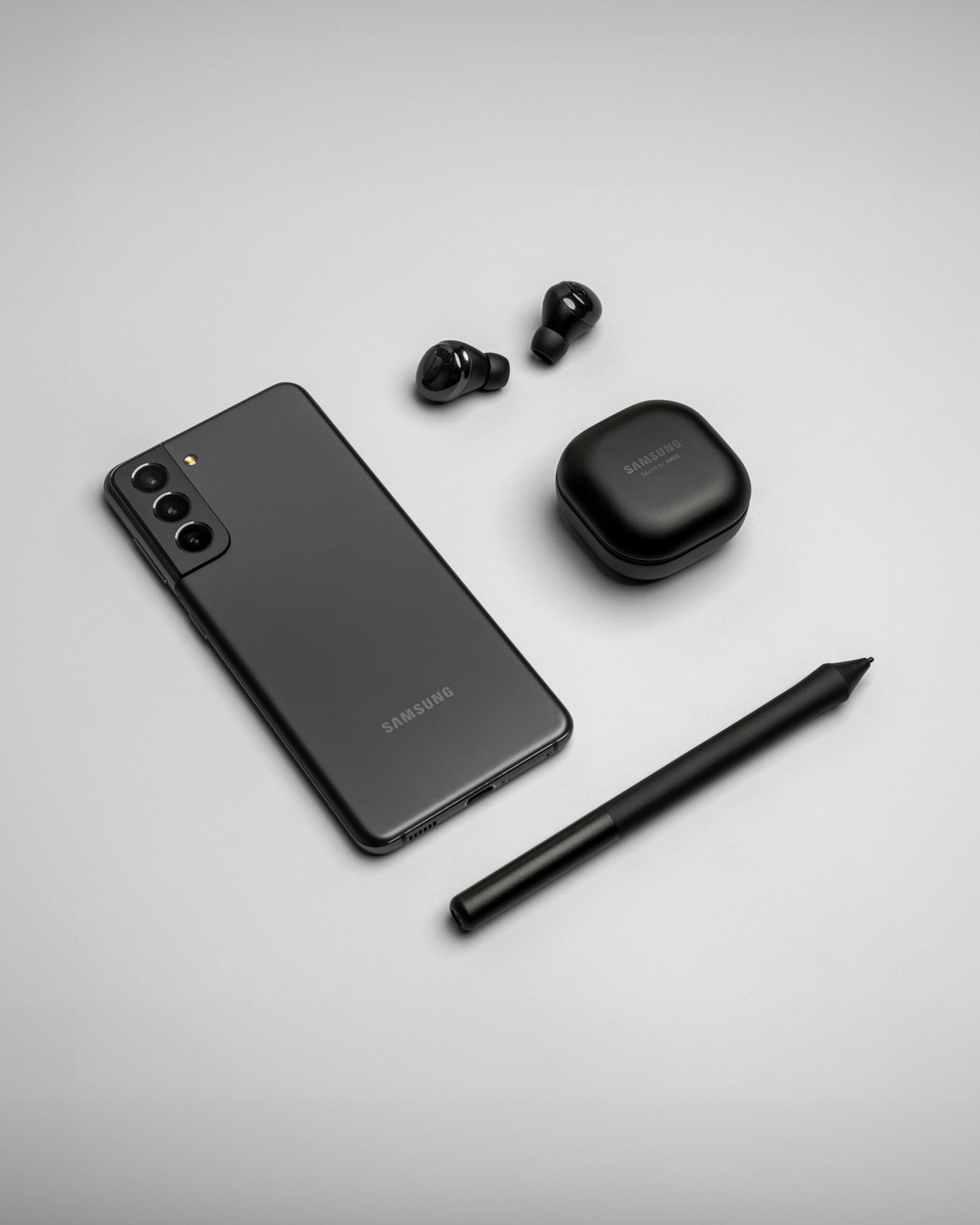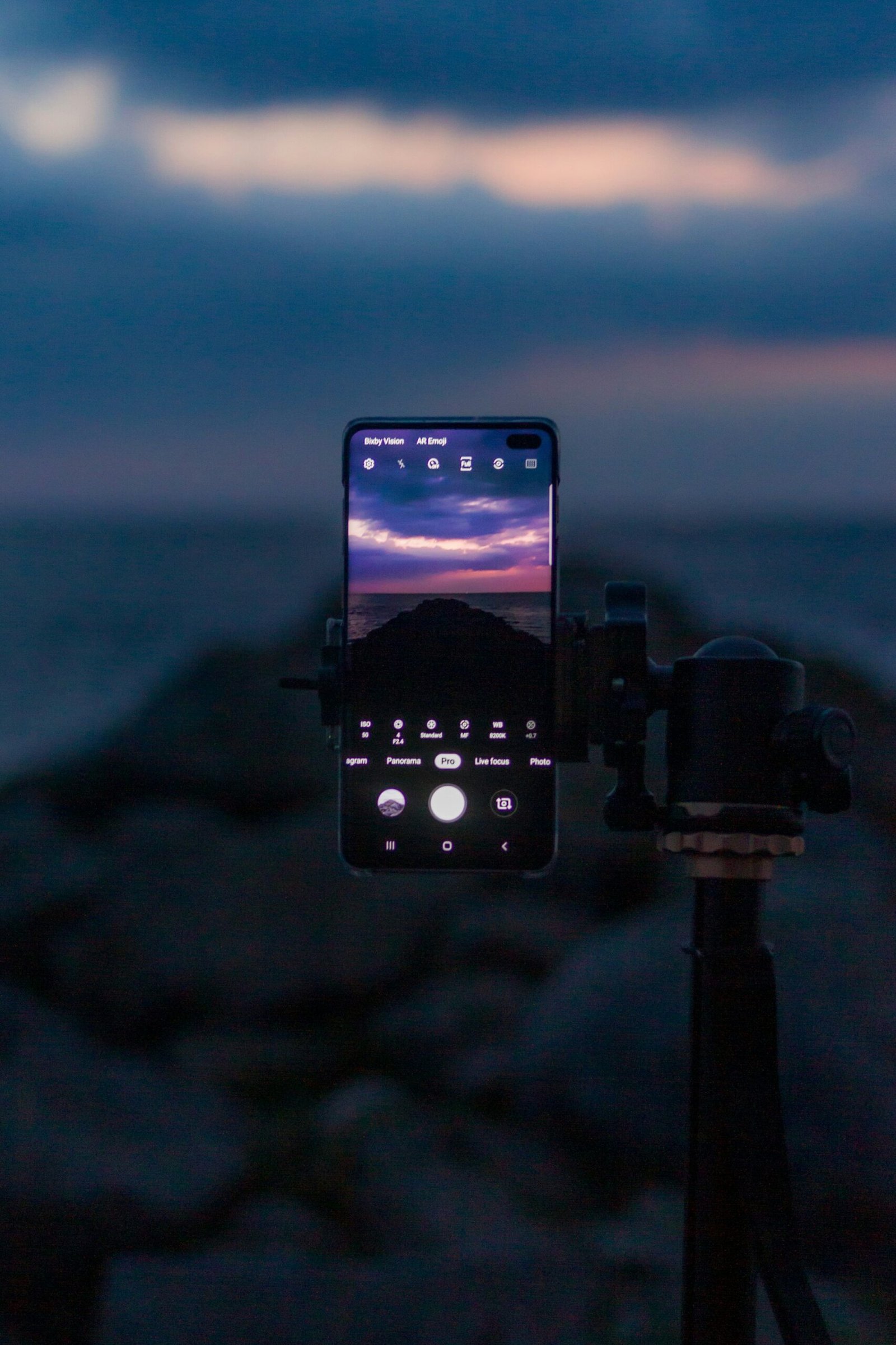Don't miss our holiday offer - 20% OFF!
Canon EOS R Review: Is It Worth the Investment?

The Canon EOS R, released in October 2018, marked Canon’s foray into the competitive full-frame mirrorless camera market. This significant release not only represented Canon’s strategic shift from traditional DSLRs but also highlighted its determination to innovate within an evolving industry. The camera’s arrival was much anticipated, as it promised to bring several of Canon’s renowned imaging technologies into a new, more compact form factor.
Prior to the EOS R, Canon ventured into the mirrorless segment with its EOS M series, which utilized APS-C sensors. Despite catering to a range of photographers and enthusiasts, the EOS M series did not achieve the same impact as its full-frame counterparts from competitors. Recognizing the growing demand for high-performance mirrorless options, Canon channeled its expertise into developing a more advanced system. Thus, the EOS R was born as Canon’s inaugural full-frame mirrorless model.
In the market, the Canon EOS R carved out a niche as a versatile yet sophisticated device. It appealed to both professional photographers and serious enthusiasts who sought the balance of mobility and image quality. Equipped with a 30.3-megapixel full-frame sensor and DIGIC 8 processor, the EOS R delivered impressive photo and video capabilities, making it a strong contender against existing industry heavyweights. Additionally, the camera’s new RF mount introduced a suite of high-quality, compatible lenses that further bolstered its appeal.
The EOS R’s release generated considerable buzz for several reasons. Firstly, it was seen as a direct response to the rapid advancements made by Sony in the mirrorless arena. Secondly, it underscored Canon’s commitment to pushing technological boundaries while maintaining the brand’s legacy of quality and reliability. The EOS R was more than just a new camera; it was a statement of intent from Canon, reflecting both their innovative spirit and strategic foresight.
Key Features and Specifications
The Canon EOS R stands out in the mirrorless camera landscape with its impressive array of specifications. Foremost among these is the full-frame 30.3 megapixel CMOS sensor, which delivers high-resolution images with exceptional detail and dynamic range. This sensor is paired with the DIGIC 8 Image Processor, enabling high-speed operation and outstanding image quality even in low light conditions.
Equipped with a highly advanced autofocus system, the Canon EOS R features the Dual Pixel CMOS AF. This system boasts a staggering 5,655 selectable AF points, providing rapid and accurate autofocus across nearly the entire field of view. This feature is particularly beneficial for capturing fast-moving subjects or for achieving precise focus in varied shooting conditions.
Video capabilities are another strong suit of the Canon EOS R. It offers 4K UHD recording at 30fps, along with Full HD at up to 60fps, and HD at 120fps for slow-motion footage. Additionally, the camera supports Canon Log, which offers up to 12 stops of dynamic range, allowing for greater flexibility and depth in post-production.
One of the unique selling points of the Canon EOS R is the RF lens mount, which provides a short back focus distance and a wide mount diameter. This design improves the communication between the lens and the camera, resulting in faster autofocus and enhanced image stabilization. The RF mount also opens up access to Canon’s expanding line of RF lenses, which are known for their superior optical quality and innovative features.
The electronic viewfinder (EVF) on the Canon EOS R is another noteworthy feature. With a high resolution of 3.69 million dots, it offers a clear and detailed view of the scene, making composition and focus checking more accurate and intuitive. The customizable Multi-Function Bar next to the EVF adds a layer of convenience, allowing quick access to frequently used settings and functions.
When compared to other cameras in its class, the Canon EOS R holds its own with its versatile and robust feature set. While some competitors may offer higher frame rates or more advanced video options, the EOS R’s comprehensive autofocus system, superior image quality, and innovative RF lens mount make it a formidable choice for both professional and enthusiast photographers.
Build Quality and Design
The Canon EOS R stands out with its impressive build quality and ergonomic design, setting a high standard in the mirrorless camera market. Constructed with a robust magnesium alloy body, it assures durability while maintaining a relatively lightweight profile at approximately 660 grams, making it comfortable for prolonged use. This balance between sturdiness and mobility is particularly appealing for photographers who require reliability without compromising on portability.
Weather sealing is a critical feature of the Canon EOS R, ensuring it performs well in diverse environments. The camera’s seals are strategically placed to protect against dust and moisture, which is a significant advantage for outdoor photographers facing unpredictable conditions. This level of protection gives professionals confidence that their equipment will withstand the elements, thereby enhancing user experience.
Ergonomically, the Canon EOS R excels with a well-thought-out button layout and a comfortable grip that conforms naturally to the hand. The placement of the buttons and dials is intuitive, allowing for easy access and quick adjustments even while on the move. The multi-function bar, a unique addition, offers customizable control options, empowering users to personalize their shooting experience further.
When compared to other Canon models and competing brands, the EOS R design emphasizes usability and comfort. For instance, against the Canon EOS 5D Mark IV, the lighter weight and more compact form factor of the EOS R make it better suited for travel and extended shoots. Competing models like the Sony A7 III also offer strong build quality, but some users might find the ergonomics of the EOS R more favorable due to its solid grip and intuitive controls.
Overall, the Canon EOS R’s thoughtful design and robust build quality contribute significantly to its user-friendly nature, making it a valuable investment for both amateur and professional photographers. Its combination of durability, weather resistance, and ergonomic excellence ensures that it is not only a joy to use but also a reliable companion in various shooting scenarios.
Performance and Image Quality
The Canon EOS R delivers impressive performance characterized by its advanced autofocus system, exceptional low-light capabilities, and superior image quality. Equipped with a Dual Pixel CMOS AF system, this camera ensures rapid and accurate autofocus, which is crucial for both still photography and videography. In various tests, the autofocus speed demonstrated exceptional responsiveness, reliably tracking subjects even in fast-paced environments.
Low-light photography benefits substantially from the Canon EOS R’s broad ISO range, which extends up to ISO 40,000. Images captured in dim lighting conditions exhibit minimal noise, thanks to the camera’s full-frame sensor and DIGIC 8 image processor. These features contribute to maintaining detail and clarity, ensuring that photos remain sharp and vibrant despite challenging lighting scenarios. Sample images reveal excellent performance, with minimal loss of detail even at higher ISO settings, rendering the Canon EOS R an ideal choice for low-light conditions.
Beyond its technical prowess, the Canon EOS R excels in producing high-quality images. The 30.3 megapixel sensor captures stunningly detailed photos with accurate color reproduction and a wide dynamic range. This allows for greater flexibility in post-processing, ensuring that photographers can recover significant detail in highlights and shadows alike. Comparative analysis with other leading models in a similar price range reveals that the Canon EOS R holds a competitive edge, particularly in dynamic range and color accuracy.
Noise levels are also impressively controlled across various ISO settings. At lower ISO values, the image quality is virtually noise-free, while higher ISOs still manage to deliver usable results without excessive graininess. This level of performance is ideal for both amateur and professional photographers seeking a reliable camera that stands out in various shooting conditions.
In terms of video performance, the Canon EOS R supports 4K recording, delivering high-definition footage with impressive clarity. The combination of robust autofocus in video mode and excellent image stabilization ensures smooth and professional-looking videos. In comparison with similar cameras, the EOS R’s video capabilities prove to be both versatile and highly effective, catering to a wide range of production needs.
Lens Compatibility and Options
The Canon EOS R system demonstrates a remarkable emphasis on flexibility and adaptability, especially in regards to lens options. Central to this are Canon’s RF lenses, which have been carefully crafted to take full advantage of the camera’s innovative design. These lenses are built with advanced optical technologies, ensuring superior image quality and outstanding performance. The RF lens lineup includes a variety of focal lengths and maximum apertures that cater to an extensive range of photography styles, from professional portraiture to landscape photography and macro work. Key models such as the RF 50mm F1.2L USM and the RF 24-105mm F4L IS USM have garnered significant acclaim for their exceptional sharpness, depth, and overall image fidelity.
Furthermore, the versatility of the Canon EOS R is greatly enhanced by its compatibility with EF and EF-S lenses through the use of a dedicated adapter. This feature is particularly beneficial for existing Canon users who have already invested in a collection of EF or EF-S glass. The adapters maintain full functionality of the older lenses, including autofocus and image stabilization features, enabling seamless integration and use without compromising on performance. This backward compatibility mitigates the transition cost and expands the usable range of lenses, substantially broadening the creative potential for photographers transitioning to the mirrorless system.
In addition to lenses, Canon offers a variety of notable accessories that complement the EOS R. These include the Control Ring Mount Adapter EF-EOS R, which adds customizable control ring functionality to EF and EF-S lenses, and the Drop-In Filter Mount Adapter, which allows for the use of drop-in filters. These adaptative solutions underscore Canon’s commitment to providing versatile and high-quality tools for photographers to enhance their shooting experience.
Overall, the Canon EOS R’s lens compatibility and the extensive range of RF lenses available, alongside the ability to use existing EF lenses with remarkable ease, significantly contribute to the camera’s appeal. Whether you are an existing Canon user or new to the brand, the lens options and accessories available for the EOS R offer impressive quality and versatility.
The Canon EOS R is designed to cater to both novice and experienced photographers, boasting a user interface that strikes a balance between simplicity and comprehensive control. The camera’s menu system is well-organized, featuring clear section headings that greatly facilitate navigation. For those familiar with Canon’s ecosystem, the menu layout will be notably intuitive, reducing the learning curve. New users, however, might find themselves needing a bit more time to adjust, but the user-friendly presentation helps ease this transition.
An outstanding feature of the Canon EOS R is its touchscreen functionality. The camera is equipped with a 3.15-inch Vari-angle touchscreen LCD, enabling users to effortlessly select settings, browse images, and navigate menus with the touch of a finger. This touchscreen capability enhances usability, providing an efficient way to access features without delving into more complex button sequences. The responsiveness of the screen is commendable, further enhancing the shooting experience.
Customization possibilities elevate the Canon EOS R’s ease of use. The camera offers multiple customizable controls, including adaptable buttons and dials. The Multi-Function Bar is a noteworthy addition, presenting a touch-sensitive control strip that users can program according to their preferences—whether it’s adjusting ISO, changing focus modes, or other frequently used settings. Despite mixed user feedback regarding the Multi-Function Bar, its potential to streamline operations shouldn’t be overlooked. Experienced photographers, in particular, may appreciate this feature for quick adjustments on the go.
Another impressive feature is the customizable dials. Users can assign specific functions to these dials, making setting adjustments both efficient and personalized. For instance, one can set the top dial to control exposure while assigning the rear dial to handle aperture, providing a seamless way to adapt to various shooting conditions.
Overall, the Canon EOS R’s user interface is thoughtfully designed to enhance the photographic workflow. Whether you’re a seasoned photographer accustomed to Canon’s paradigms or a newcomer keen to explore serious photography, the camera’s intuitive design fosters an engaging user experience.
Battery Life and Connectivity
The battery life of the Canon EOS R is a critical factor that potential buyers consider, especially those who engage in extensive photography or videography sessions. Equipped with the LP-E6N battery, the Canon EOS R offers a decent battery life, providing approximately 370 shots per charge according to the CIPA rating. This performance can vary depending on usage conditions. For instance, during continuous shooting in burst mode or lengthy video recording sessions, the battery tends to deplete faster. However, under conditions of moderate usage, such as intermittent shooting or casual photography, the battery life extends considerably, making it well-suited for day-long excursions.
On the connectivity front, the Canon EOS R is equipped with a range of options designed to enhance its utility and user-friendliness. The built-in Wi-Fi allows for seamless transfer of images and videos directly to a smartphone or computer, facilitating immediate sharing and backup. Additionally, the Bluetooth connectivity ensures a constant low-energy connection to mobile devices, enabling remote control functionalities and instant image transfers without significant battery drain. The inclusion of a USB-C port is another valuable feature, allowing for faster data transfers and in-camera charging. This capability is particularly beneficial for professionals who need to ensure their device stays powered up throughout intensive shoots.
Moreover, the Canon EOS R includes several power-saving modes to extend battery life further. Users can adjust the camera settings to reduce power consumption when the camera is idle. For instance, the camera can automatically switch off the rear LCD screen or enter a sleep mode after a preset period of inactivity. These features not only help in conserving battery but also contribute to the longevity of the battery’s lifecycle.
In summary, the Canon EOS R offers a robust battery performance that can be optimized through various power-saving modes, alongside comprehensive connectivity options including Wi-Fi, Bluetooth, and USB-C. These features collectively enhance the overall utility and convenience of the camera, making it a worthy consideration for both hobbyists and professional photographers.
Value for Money and Conclusion
The Canon EOS R represents a significant investment for photographers, but whether it offers substantial value for money depends on several key factors. Priced competitively within the mirrorless camera market, the EOS R delivers an impressive blend of high-end features and robust performance that justify its cost to a considerable extent.
Firstly, the EOS R boasts a stellar 30.3 MP full-frame sensor, providing exceptional image quality and dynamic range. For professional photographers and advanced amateurs, this level of detail and clarity is invaluable. Moreover, the camera’s Dual Pixel CMOS AF system ensures fast and precise autofocus, significantly improving the shooting experience in both stills and video. These attributes make the camera a strong contender for those prioritizing superior image quality and reliable autofocus mechanisms.
Another key feature is the DIGIC 8 image processor, which enhances the overall performance and facilitates functions such as 8 fps continuous shooting and 4K video recording. These capabilities cater well to different photographic needs, from high-speed sports photography to intricate videography projects. Additionally, the articulated touchscreen and electronic viewfinder offer an intuitive user experience, which is an added plus for users shifting from DSLRs to mirrorless systems.
However, the Canon EOS R is not without its weaknesses. Some users might find the 4K video crop factor and lack of in-body image stabilization (IBIS) somewhat limiting, particularly for professional videography. Furthermore, as compared to its contemporaries, the limited native lens availability might pose a challenge for some photographers, although this can be mitigated by using EF-EOS R mount adapters.
For enthusiasts and semi-professional photographers, the EOS R provides a balanced mix of features and performance that justifies its price. Advanced professionals might require more specific features such as IBIS or an extensive native lens lineup, in which case, considering higher-end models might be worthwhile. Nonetheless, for a vast majority of users seeking high-quality imagery and robust functionality, the Canon EOS R stands out as a worthy investment.


